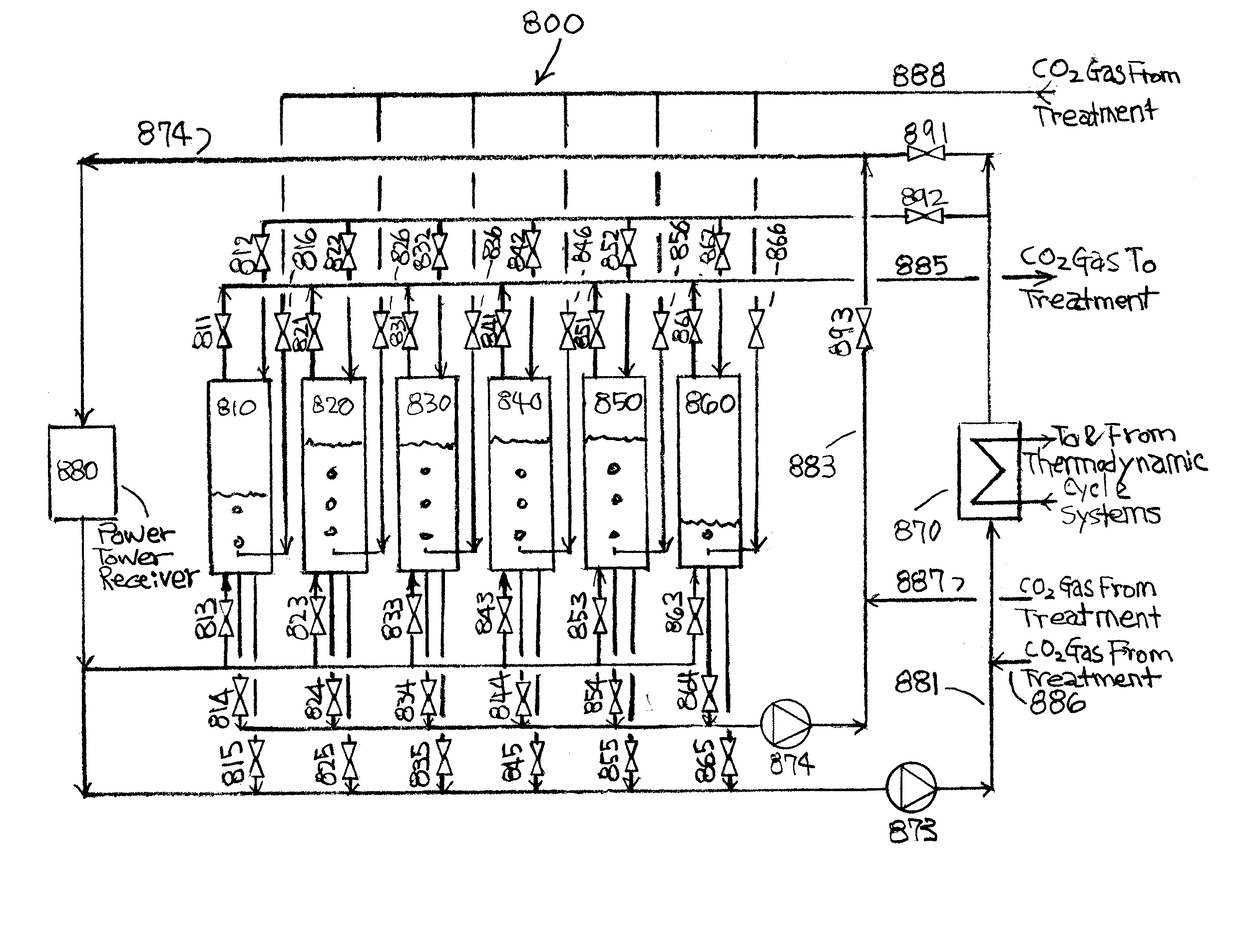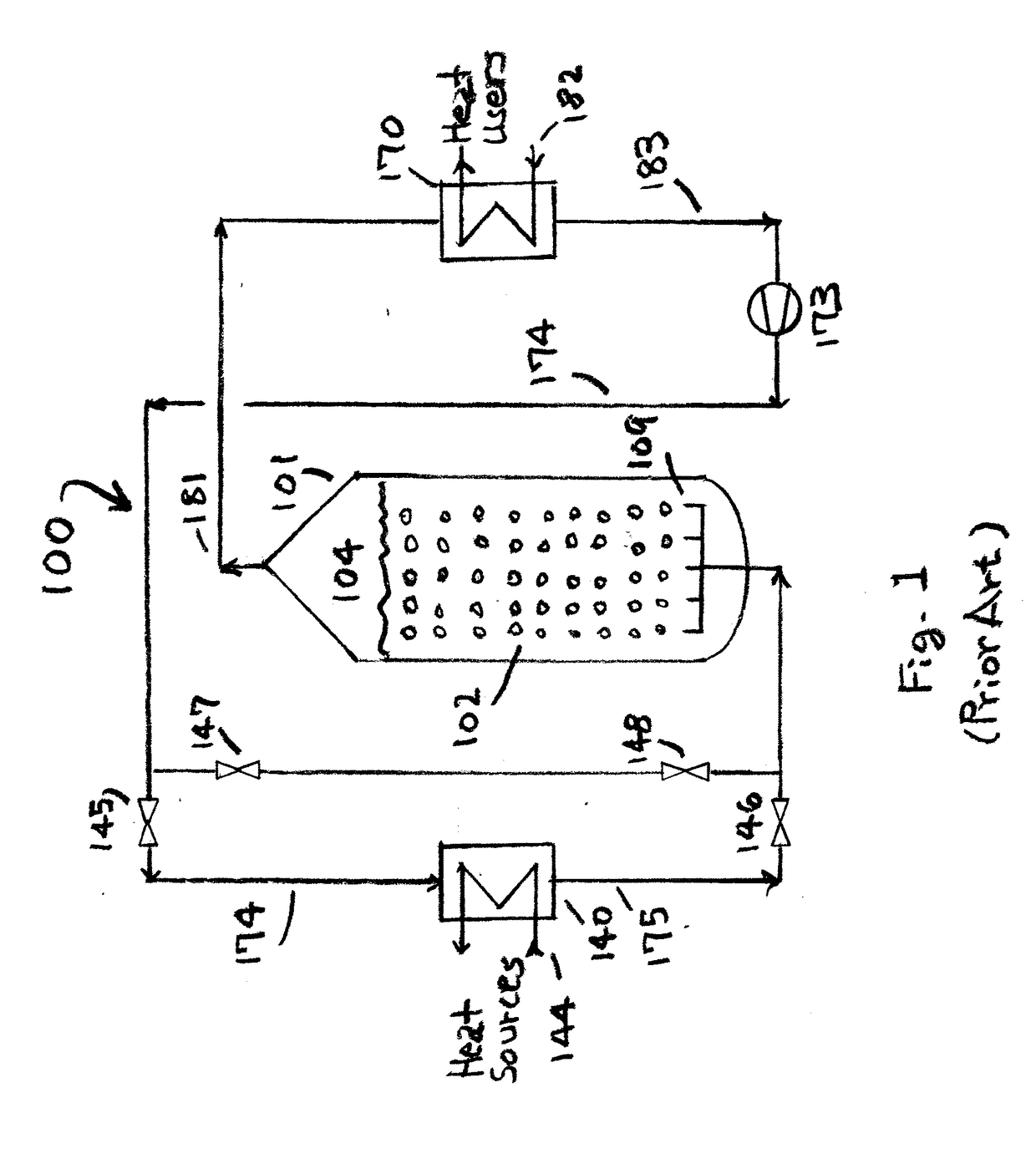Sensible Thermal Energy Storage (STES) Systems
a technology of thermal energy storage and sensing, applied in the field of sensing thermal energy storage (stes) systems, can solve the problems of inability to use, inability to meet the needs of solar salt, etc., to achieve the effect of high heat storage and recovery efficiency, and reducing the total storage volum
- Summary
- Abstract
- Description
- Claims
- Application Information
AI Technical Summary
Benefits of technology
Problems solved by technology
Method used
Image
Examples
first embodiment
[0051]this invention in FIG. 2 shows a multi-chamber STES system for charging and discharging thermal energy from a power tower receiver using an immiscible gaseous HTF. The system converts a form of thermal energy of low volumetric heat capacity at temperatures near 900° C. to a form of dispatchable energy of high volumetric heat capacity at temperatures above 600° C. For this purpose, the process uses a gaseous HTF that is heated up to a temperature around 900° C. by a power tower receiver, and contacted by gas bubbling with the molten eutectic salt layer to store the thermal energy at 800° C. at an optimum system operating pressure. While the individual chambers are cooled from 800° C. to 600° C. in the heat discharging steps, the multi-chamber system as a whole generates an output gas stream at a constant temperature of 700° C. In practice, the operating pressure and temperature for the system are determined by a trade-off analysis.
[0052]Circulating gaseous HTF stream 274 must b...
second embodiment
[0086]For this invention, a multi-chamber STES system with a molten eutectic salt liquid being used as a TES medium and also as a liquid HTF is illustrated in FIG. 6. The system is utilized for charging and discharging thermal energy from power tower 680. System 600 comprises chambers 610, 620, 630, 640, 650 and 660, heat recovery exchanger 670, power tower receiver 680, heat recovery pump 673, and heat storage pump 674.
[0087]During the daytime, system 600 supplies thermal energy to the thermodynamic cycle systems for generation of electricity and also charges heat to the TES chambers. At this time, valves 644, 691 and 693 are opened and valve 692 is closed. Two pumps 673 and 674 work simultaneously; pump 673 for electricity generation and pump 674 for heat storage. Pump 673 circulates the molten salt liquid through heat recovery exchanger 670, and pump 674 from one of the chambers containing cold liquid, for example, from chamber 610 by opening valves 611 and 614 and closing valves...
PUM
| Property | Measurement | Unit |
|---|---|---|
| temperatures | aaaaa | aaaaa |
| temperature | aaaaa | aaaaa |
| temperature | aaaaa | aaaaa |
Abstract
Description
Claims
Application Information
 Login to View More
Login to View More - R&D
- Intellectual Property
- Life Sciences
- Materials
- Tech Scout
- Unparalleled Data Quality
- Higher Quality Content
- 60% Fewer Hallucinations
Browse by: Latest US Patents, China's latest patents, Technical Efficacy Thesaurus, Application Domain, Technology Topic, Popular Technical Reports.
© 2025 PatSnap. All rights reserved.Legal|Privacy policy|Modern Slavery Act Transparency Statement|Sitemap|About US| Contact US: help@patsnap.com



